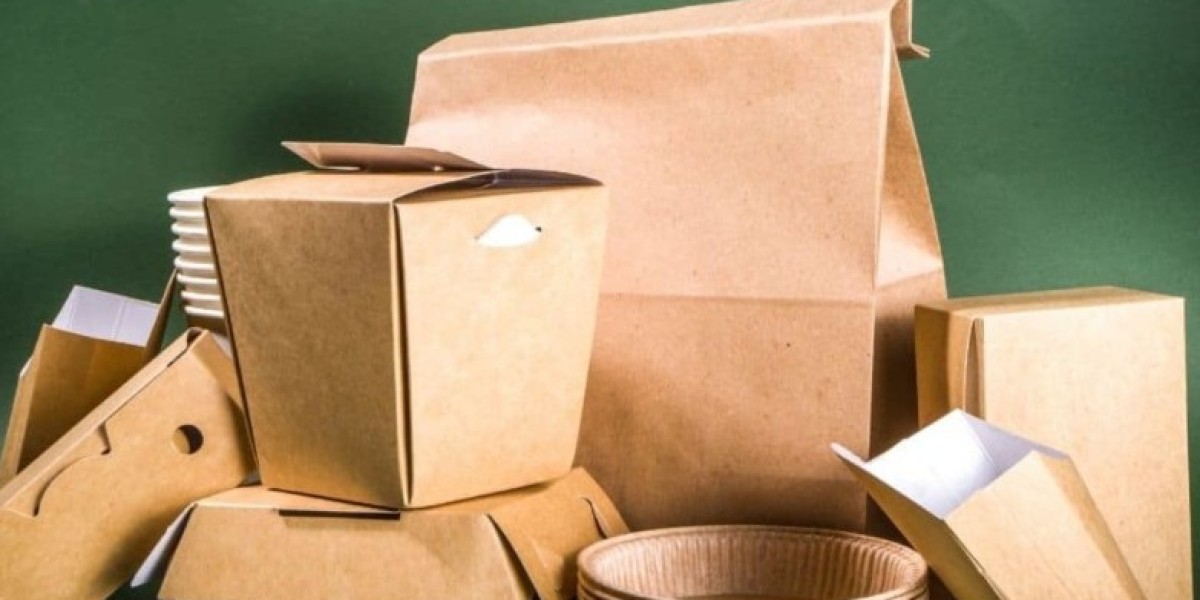With the exponential growth of online retail and a larger focus on environmental sustainability, e-commerce businesses are increasingly looking for greener packaging options. Conventional packaging like plastic bubbles and air-filled mailers generate a massive amount of non-recyclable waste.

Eco-friendly packaging helps reduce environmental impact while appealing to environmentally-conscious consumers. There are various types of sustainable packaging materials and options that e-commerce companies can choose from depending on their budget and product characteristics. This article discusses 7 key types of eco-friendly e-commerce packaging.
1. Corn-Based Bioplastics
Corn-based bioplastics are made from renewable feedstock like starch obtained from corn grain. They offer an attractive alternative to conventional plastics as they are compostable and biodegradable. Popular corn-based bioplastics include Polylactic Acid (PLA) and Starch-based plastics.
PLA is one of the most widely used bioplastics. It breaks down into carbon dioxide, water and biomass at the end of its use cycle. PLA packaging like mailers, bags and pouches provide cushioning and protection comparable to bubble wrap or air pillows. They print, fold and seal like regular plastic packaging.
Starch-based bioplastics offer similar benefits. The difference is that they contain a higher percentage of starch, making them more quickly biodegradable than PLA. Both PLA and starch-based bioplastics can be industrial composted.
While they cost slightly more than conventional plastics, corn-based bioplastics are a greener option that appeals to eco-conscious consumers. They reduce landfill waste and can potentially be integrated into existing packaging workflows with minimal changes.
2. Paper Packaging
Various types of paper-based and paperboard packaging are sustainable options for e-commerce businesses. Kraft paper mailers, padded envelopes and cardboard boxes made from recycled fibers are widely used.
Kraft paper mailers are inexpensive, strong and easily customizable with company branding. They come in different thicknesses to accommodate varying product sizes. Kraft paper is porous and breathable, preventing moisture accumulation. It is recyclable and biodegradable.
Padded envelopes made of paper or paperboard provide protection through an inner layer of cornstarch peanuts, cellulose, fiber or recycled paper padding. They are lightweight, cost-effective and fully recyclable.
Corrugated cardboard boxes of different grades provide durable yet lightweight packaging. Boxes made from recycled content significantly reduce environmental impact. Double-walled boxes increase cushioning. Many companies return and recycle used boxes.
Paper/paperboard packaging is recyclable, biodegradable, and uses renewable, sustainably-sourced fibers. While not as durable as plastic, strategic layering and cushioning keeps products safe. It demonstrates commitment to sustainability.
3. Reusable Mailers
Instead of single-use mailer bags or envelopes, some businesses opt for reusable mailers that can be shipped back for reuse multiple times, reducing packaging waste. Typical reusable mailers include:
- Fabric mailers constructed from polyester or nylon fabrics that are durable, water-resistant, and can withstand many shipping cycles.
- Polymailers made of thick, reusable plastic similar to reusable grocery bags. They are waterproof and last for years with proper care.
- Plastic mailers printed with return address and prepaid shipping label for mailing back after use. Buyers affix return label for effortless recycling.
Reusable mailers offer an environmentally-friendly and cost-effective option when order volumes are predictable. Buy-back and reship programs encourage reuse. Proper cleaning extends product life. While initial costs are higher, savings add up over several reuse cycles. Tracking reuse rates helps measure sustainability impact.
4. Shipping Envelopes
Mailing products through standard letter size or legal shipping envelopes replaces the need for separate packaging in many cases. Typical envelopes that serve this purpose include:
- Tyvek envelopes made of high-density polyethylene fibers that are tear-resistant and waterproof.
- Padded envelopes with cardboard backing and cellulose or recycled paper filling for cushioning.
- Kraft paper envelopes that are sturdy, affordable and fully recyclable.
Envelopes neatly encapsulate small, lightweight items without excess material. They mail as letters through regular post at a lower rate than packaged parcels. Some also have bubble lining or foam sheets for insulation. Envelopes reduce material usage and optimize shipping costs for small e-commerce orders.
5. Loose Fill
Loose fill packaging materials like popcorn, wood shavings or shredded paper provide cushioning and fill empty spaces inside shipments. They minimize wasted space inside boxes. Common types include:
- Biodegradable loose fill made from popcorn, wood shavings or shredded paper. It protects without plastic films.
- Recycled paper packaging peanuts or shredded paper from waste paper processing plants.
- Cellulose loose fill that is plant-based, compostable and breaks down faster than plastic.
Loose fill takes up minimal warehouse space and adjusts to any size/shape void, optimizing transportation. It is compacted after delivery for recycling or composting. Some products can even be eaten by birds! Proper packing trains customers to return fill for reuse, further lowering environmental impact.
6. Fabric Bags
Reusable, durable fabric bags like totes or muslin bags are reusable packaging alternatives, especially for heavier or bulkier products. Key attributes include:
- High-quality fabrics like cotton or hemp that are stable, washable and long-lasting.
- Attractive designs and convenience features like shoulder straps appealing to customers.
- Products protected without single-use materials inside sturdy bags.
Fabric bags add a premium and personalized touch to online orders when designed well. Customers reuse them for other purposes, extending product lifespan. Combined with prepaid return labels, bags circulate sustainably within customer networks with minimal waste.
7. Recycled Packaging Materials
Where possible, e-commerce companies should source packaging materials containing recycled content to lower their environmental footprint. Look for:
- Cardboard and paper products made from 100% post-consumer recycled content.
- Plastic mailers containing recycled plastic resin.
- Loose fills derived from recycled paper and plant materials.
Using recycled inputs diverts waste from landfills while reducing demand for virgin raw materials. It supports the circular economy model of sustainably sourcing, reusing and cycling resources. Companies must partner with suppliers transparently tracking recycled composition to verify claims.
Conclusion
Innovative packaging serves twin goals of sustainability and customer satisfaction. By intelligently blending the right eco-friendly options to suit various inventory, affordable and effective sustainable packaging solutions emerge. Proper communication educates buyers about sustainability values and returns programs. Beyond compliance, it nurtures brand loyalty through shared environmental stewardship.









